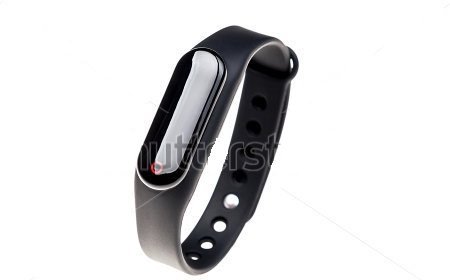What I Learnt This Week 4: Wristband Track's You, Clinical Vampirism, Botnet of Things, Whale Talks, Negligible Senescence
Hello buddies! Welcome to another episode in the series of "What I learnt for the week". Once again, I appreciate @mobbs for the permission to join this trail.
Over the course of the week (5th February - 9th February), I learnt a couple of amazing things, and I would pick out 5 of them; in no particular order, to represent the discoveries I made for each day of the week.
Ok buddies, let's hits straight to the amazing discoveries I made.
Monday: The Smart Wristband That Tracks You
Just as my usual custom is; I would love to begin this episode with one of my favourite areas; "robotics and machines".
Advances in technology have led to the invention of devices that have simplified the activities of humans. What easier way can an employer use to monitor the activities of his workers for example? Well, technology has provided an easier solution to this: The Smart wristband.

This wristband was designed by Amazon, and was also patented on 30th of January 2018; which could track the position, movement, location, and activities of people (factory workers for example), and provide haptic feedback in real-time. When a worker reaches for a wrong tool, the wristband can indicate to the wearer of the error; or if he drifts away from the point of duty, it would send signals to the control room.
And also, this wristband monitors and reports the stress-level of the workers, so as to prevent over-exertion of one's self in the course of duty.
Mechanics of the smart wristband
First of all, ultrasonic devices would have to be installed at some designated places that require the coverage of the signals. Then with the motion sensor embedded into the wristband, there would be interconnection between the wristband and the ultrasonic device.
These ultrasonic devices would be emitting ultrasonic waves of varying frequencies. And once the wearer moves from "point A" to "point B", there would be a relay of signal from the band to the ultrasonic devices, and also to the the control room. In that way, the person's activities can be monitors autonomously in real-time.
But looking at a broader application of this smart wristband, it could find some other uses in areas like: The military, where the position and location of soldiers would be tracked and also relayed to other soldiers (so, no more " sergeant, where's your location? Do you copy ?").
Have I piqued your interest? Click here for more info.
Tuesday: Clinical Vampirism
Have you ever seen the movie "blade" or "dracula" and the appetite for blood exhibited by those vampires? What if I tell you that there's a medical condition that replicates the same effect in the sufferer? Well, this condition is called Renfield Syndrome (or Clinical Vampirism)

The word "Renfield syndrome" was coined in 1992 by Dr Richard Noll after "Renfield"; a 1931 fictional movie character of dracula. This medical condition manifests itself with obsession for blood and the appetite for drinking blood.
This obsession is more often associated with pleasure. And according to a publication by Dr Sulata Shenog (Consultant Psychologist), two of the earlier cases of Clinical Vampirism were identified in the mid 1960s; and since then, many other cases have arisen.
According to Sulata:
Clinical Vampirism is a deep-sitted psychiatric disorder, which is associated with other weird behavioural pattern, coupled with the appetite for blood. Dr Sulata Shanog. Source [paraphrased by me].
As it has been reported in most cases, Clinical Vampirism manifests first as autovampirism (a case where a person starts drinking his own blood), which degenerates to other forms, including blood of animals and other humans. Which would be exhibited in criminal tendencies, just to satisfy the appetite for blood.
In the mid 20th century, a particular crime scene was reported. This scene was very disturbing as Richard Chase was caught drinking the blood from a victim he had killed. Now this could be linked to an extreme case of Clinical Vampirism.
There have also been some misconceptions and myths that have been associated with clinical Vampirism, these myths include: "Drinking of blood gives supernatural abilities and powers, and also enhances sexual performance". But as we have seen, this condition is purely psychotic; at least according to medical point of view by Dr Sulata.
Are the people suffering from this condition also sensitive to sunlight, stakes, garlic, and silver? Lol. Well, to know more about Clinical Vampirism, click here.
Wednesday: Botnet of Things (the Internet dark army)
Okay we may have heard of "Internet of Things", which is simply the interconnection of devices and gadgets around the world. But do you know that these interconnections could also take your devices to a really dark side? (just like a zombie). Well, I'd love to inform some, and reiterate to others, that a new "device zombie" has arisen, and it is called "botnet of things".

Botnet is a rather insidious malware which infects devices connected to the internet and turns them into armies of zombie, which can be controlled from one central sever.
And as we all know, the internet has shrunk the world to a "global village", but that has also provided a pathway for botnet to infect more devices.
Two earlier versions of botnet were identified as Mirai and Satari, in 2017 and 2016 respectively. In the case of Mirai, as reported, the botnet infected and compromised almost 1million devices ranging from routers, to pc webcam, and other internet-enabled devices, and was seen to spam them with huge traffic of data which caused a major shutdown in some internet architectures temporarily.
According to the same report, some well known sites that got the attack temporarily included; Airbnb, New york times, and even Twitter. Also, when the botnet infects a device, it scans through to clone stored passwords and settings, which it uses to control the device.
Because of these threats, cybersecurity is of all things, most needed, to ensure the safety of the internet as the era of IoT (Internet of Things) progresses with more complexity.
Security measures
There are some measures to keep handy with in order to help checkmate the threat to cyberspace. I would just run down some of them.
Ensure you change the password and settings of your device intermittently.
Be very sensitive to observe the workings of your device. Once you notice a slowdown or any anomaly, do not assume anything, just contact the services of a trained cybersecurity personnel.
Like it has always been said; do not click on links you're not familiar with
To know more about botnet of things, click here. (Don't worry, you won't be infected :D)
Thursday: Whale talks to human
Animals have been taught to pick up various human activities. Some time ago, we also saw how dolphins were armed for military use. But what if I tell you that whales can be taught to communicate with humans, would you believe me?

Well, by "communication"" I wasn't referring to fluent expressions of constructive sentences, but a whale has been taught to express some few human languages.
A very fascinating case is that of Wikie the orca, which has been believed to be the first killer whale to express human-understandable phrases, as she had been taught by a group of scientists led by Amy. She has always shown brilliance in her response to the training and has been observed to say words that included: "one, two, three", "hello", "Amy" (that's the name of her teacher).
I had to look for a video of Wikie expressing herself, and I found one in YouTube :D.
This communication is seem to be done through her blowhole, while she partly immerses herself in water, thus keeping the blowhole above water.
Though scientists have shown reservations about imposing our natural abilities as humans in animals, but in the future, we could see ourselves having decent conversations with whales, and other animals too.
According to Dr Jose Abramson
In the future, Wikie could have a basic chat with humans... it is possible. - Dr Jose Abramson [paraphrased by me]
Click here for more info.
Friday: Negligible Senescence (Living longer)
It has been an age-long desire of humankind to reverse the process of aging, or at least, slow down the aging process (senescence), and as the day passes, advancements are bringing us closer achieving this.

One of the recent researches has proven the success of rejuvenating humans by gene therapy. And the test subject was Elizabeth Parrish, who has gone down in history as the first successful human subject to reverse the process of natural senescence.
Elizabeth was seen to have undergone series of gene therapy. One of them was in 2015, which was aimed at protecting her muscles against degeneration associated with senescence. This procedure was to reverse the shortening of the "Telomere". We all know that Telomere protects the individual end of the chromosomes form deterioration, but gets shorter with the effect of aging. Now, reversing the shortening of the Telomore would ultimately reverse the effect of aging.
Does Immortality beckon?
Clearly from the case of Elizabeth Parrish, you would infer that a trail has been blazed in the right direction, even as biotechnology and genetic engineering get advanced.
But would this therapy have adverse effect on humans in the long run? Would it be detrimental to our mental age? You can find out here.
Ok buddies, this is a summary of some of the discoveries I made for the week. Join me next time as I bring other exciting discoveries. But until then, keep learning, and don't stop learning. @samminator says so.
Thanks for reading
References for further reading: Ref1, Ref2, Ref3, Ref4, Ref5, Ref6, Ref7, Ref8, Ref9, Ref10


gif by @foundation
Clinical vampirism! That's too creepy. Can't believe it's actually happening in real life
I know right, I didn't know that was a thing. Maybe that's where some of the vampire stories come from.
Lol. Exactly what I was thinking :D
Lol. There are many other creepy things out there bro :)
This is a test comment, notify @kryzsec on discord if there are any errors please.
Being A SteemStem Member
Thanks a lot @steemstem. It's an honour
Clinical vampirism reminded me of this :P
Good work @samminator! :)
Hahahaha. This is really hilarious.
Thanks for dropping by @ruth-girl
Whale talking to human got my attention, Amy must have dedicated a lot of time to achieve that.
Exactly what I thought too, bro :)
Hi @samminator. Please be careful, some of the pictures you use are copyrighted, if I am not mistaking... Do you mind updating them? Thanks in advance!
Ok sir. I'm doing it right away sir
Done sir. Thanks a lot for the heads up
Why not 1 post for each topic?
That's what I learnt for the week